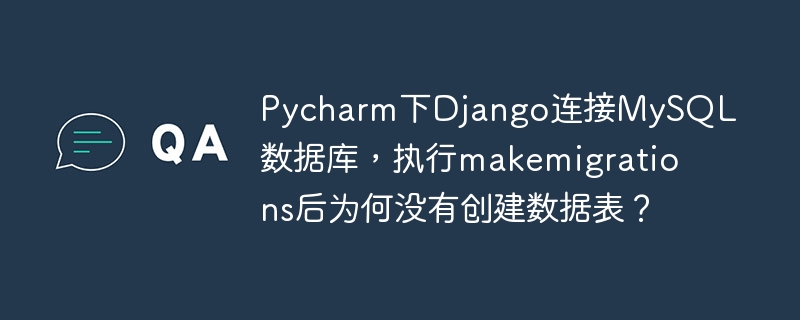
如何使用Hyperf框架進(jìn)行ORM操作
導(dǎo)語(yǔ):
Hyperf 是一個(gè)高性能的協(xié)程框架,具備靈活的組件化設(shè)計(jì)和強(qiáng)大的依賴(lài)注入功能。它為開(kāi)發(fā)者提供了許多便捷工具和組件,其中之一就是ORM(對(duì)象關(guān)系映射)操作。本文將介紹如何使用Hyperf框架進(jìn)行ORM操作,并提供具體的代碼示例。
一、安裝與配置
在開(kāi)始之前,首先需要確保已經(jīng)安裝了Hyperf框架,具體安裝步驟可參考Hyperf官方文檔。
1.1 安裝依賴(lài)
在命令行中運(yùn)行以下命令來(lái)安裝數(shù)據(jù)庫(kù)操作的依賴(lài):
composer require hyperf/model composer require hyperf/database
1.2 配置數(shù)據(jù)庫(kù)連接
在 Hyperf 框架中,數(shù)據(jù)庫(kù)連接配置位于config/autoload目錄下的databases.php文件中。在該文件中,可以配置所有數(shù)據(jù)庫(kù)連接信息,包括主從庫(kù)、連接池等。
以下是一個(gè)簡(jiǎn)單的數(shù)據(jù)庫(kù)配置示例:
return [ 'default' => [ 'driver' => env('DB_DRIVER', 'mysql'), 'host' => env('DB_HOST', '127.0.0.1'), 'port' => env('DB_PORT', 3306), 'database' => env('DB_DATABASE', 'test'), 'username' => env('DB_USERNAME', 'root'), 'password' => env('DB_PASSWORD', 'password'), 'charset' => 'utf8mb4', 'collation' => 'utf8mb4_unicode_ci', 'pool' => [ 'min_connections' => 1, 'max_connections' => 10, 'connect_timeout' => 10.0, 'wait_timeout' => 3.0, 'heartbeat' => -1, 'max_idle_time' => (float) env('DB_MAX_IDLE_TIME', 60), ], 'options' => [ // ... ], ], ];
二、定義模型
在使用Hyperf框架進(jìn)行ORM操作之前,首先需要定義模型。模型相當(dāng)于一個(gè)與數(shù)據(jù)庫(kù)表對(duì)應(yīng)的PHP類(lèi),通過(guò)模型可以方便地操作數(shù)據(jù)庫(kù)。在Hyperf框架中,模型需要繼承Hyperf/Model/Model類(lèi),并定義與數(shù)據(jù)庫(kù)表對(duì)應(yīng)的屬性。
以下是一個(gè)簡(jiǎn)單的模型定義示例:
<?php declare (strict_types=1); namespace AppModel; use HyperfDbConnectionModelModel; /** * @property int $id * @property string $name * @property int $age * @property string $gender */ class User extends Model { /** * The table associated with the model. * * @var string */ protected $table = 'users'; /** * The attributes that are mass assignable. * * @var array */ protected $fillable = ['name', 'age', 'gender']; /** * The attributes excluded from the model's JSON form. * * @var array */ protected $hidden = []; /** * The attributes that should be cast to native types. * * @var array */ protected $casts = []; }
在上述代碼中,定義了一個(gè)名為 User 的模型,該模型對(duì)應(yīng)了名為 users 的數(shù)據(jù)庫(kù)表。模型中定義了與表對(duì)應(yīng)的屬性,并指定了可以批量賦值的屬性。
三、查詢(xún)數(shù)據(jù)
在使用Hyperf框架進(jìn)行ORM操作時(shí),可以使用模型的查詢(xún)構(gòu)造器來(lái)構(gòu)建查詢(xún)語(yǔ)句。
以下是一些常見(jiàn)的查詢(xún)操作示例:
3.1 查詢(xún)所有數(shù)據(jù)
use AppModelUser; $users = User::all(); foreach ($users as $user) { echo $user->name; }
3.2 條件查詢(xún)
use AppModelUser; $user = User::where('age', '>', 18)->first(); echo $user->name;
3.3 添加查詢(xún)條件
use AppModelUser; $user = User::where('age', '>', 18) ->orWhere('gender', 'female') ->orderBy('age', 'desc') ->first(); echo $user->name;
3.4 聚合函數(shù)查詢(xún)
use AppModelUser; $count = User::where('age', '>', 18)->count(); echo $count;
四、插入、更新和刪除數(shù)據(jù)
在Hyperf框架中,可以使用模型的create()、update()和delete()方法來(lái)插入、更新和刪除數(shù)據(jù)。
4.1 插入數(shù)據(jù)
use AppModelUser; User::create([ 'name' => 'Tom', 'age' => 20, 'gender' => 'male', ]);
4.2 更新數(shù)據(jù)
use AppModelUser; $user = User::find(1); $user->name = 'Jerry'; $user->save();
4.3 刪除數(shù)據(jù)
use AppModelUser; $user = User::find(1); $user->delete();
五、總結(jié)
本文介紹了如何使用Hyperf框架進(jìn)行ORM操作,并提供了具體的代碼示例。通過(guò)模型的查詢(xún)構(gòu)造器,我們可以輕松地進(jìn)行數(shù)據(jù)庫(kù)的增刪改查操作。同時(shí),Hyperf框架還提供了許多其他強(qiáng)大的功能,如依賴(lài)注入、事件驅(qū)動(dòng)等,可以進(jìn)一步提升開(kāi)發(fā)效率。
希望本文對(duì)您有所幫助,如果有任何疑問(wèn)或建議,請(qǐng)隨時(shí)留言討論。祝您在使用Hyperf框架進(jìn)行ORM操作時(shí)取得成功!
.jpg)

















.png)
